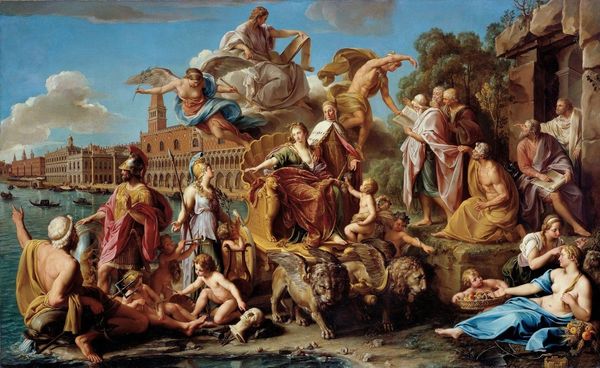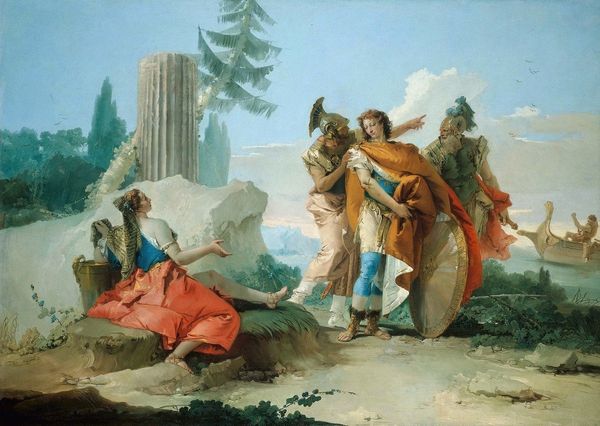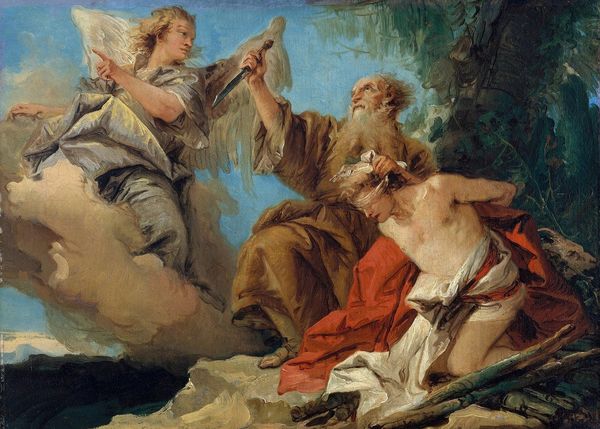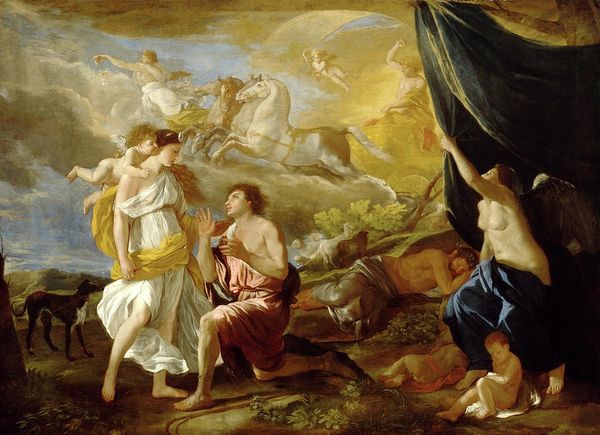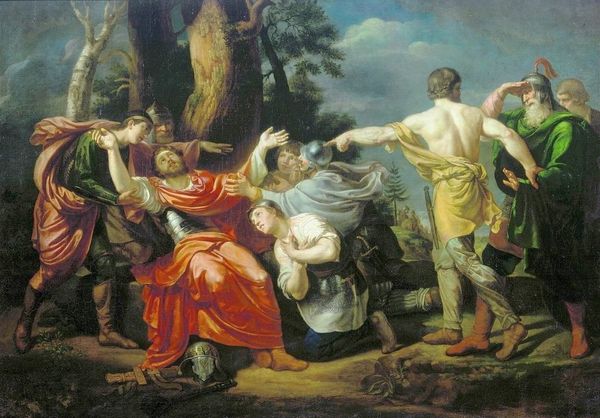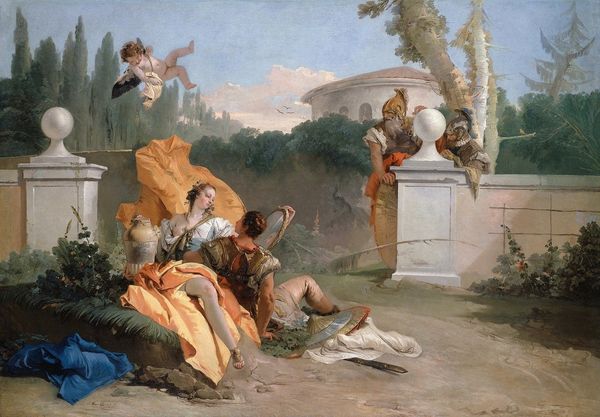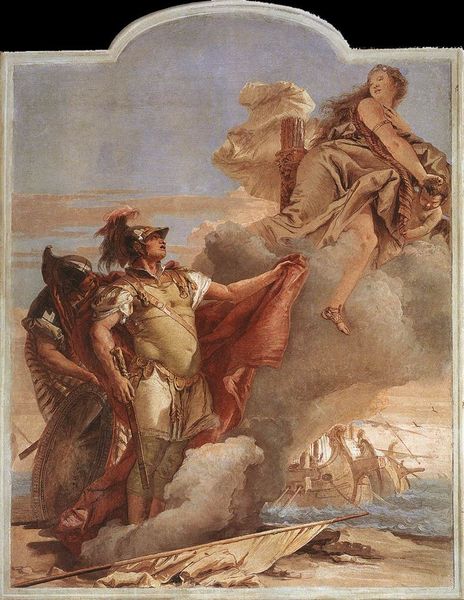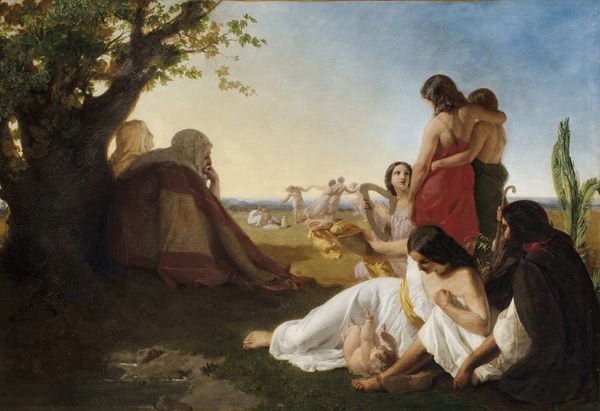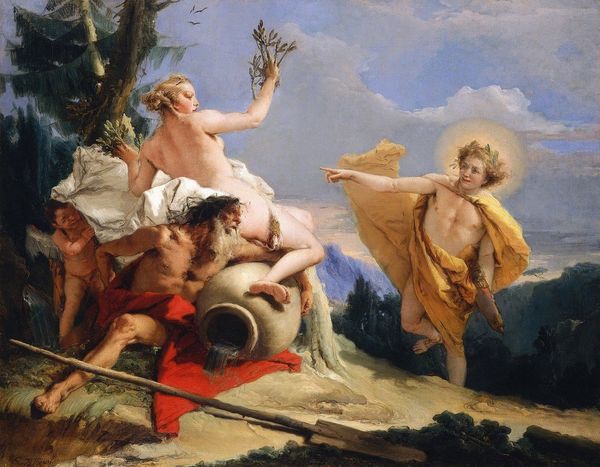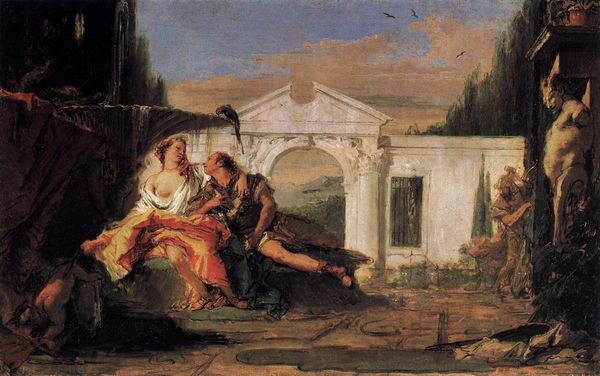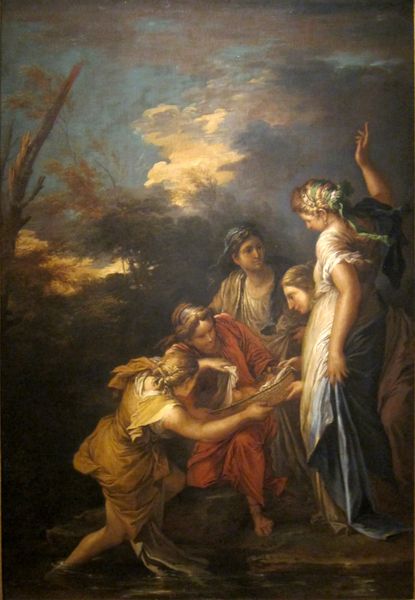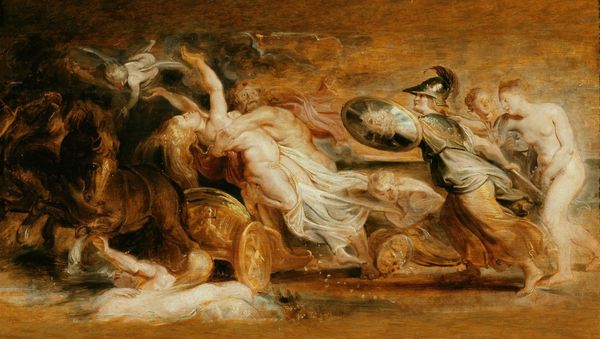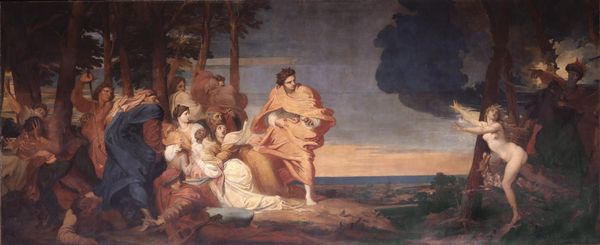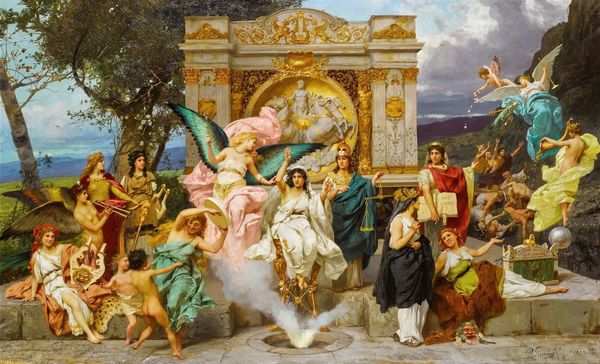
painting, oil-paint
#
allegory
#
baroque
#
painting
#
oil-paint
#
landscape
#
oil painting
#
mythology
#
history-painting
#
portrait art
#
rococo
Copyright: Public Domain: Artvee
Curator: What a find. Standing before us is Giovanni Battista Tiepolo's "Rinaldo and the Magus of Ascalon," an oil painting dating back to 1742. It really encapsulates a certain era, don't you think? Editor: My immediate thought? A dreamscape. The light, the pastel colors—it all feels so ethereal, even with the figures so prominently staged. Curator: Precisely. Tiepolo was masterful in using light to create drama and guide the viewer's eye. Look at how Rinaldo is bathed in a heroic glow, setting him apart from the magus. It’s a theatrical moment lifted from mythology, painted during a period deeply invested in historical and mythical narratives to project certain ideals of leadership. Editor: It certainly prompts contemplation of symbolism. What does the prone figure at their feet represent? And is that boat departing, carrying someone else away from Ascalon? Curator: It's complex. That prostrate figure could symbolize conquered weakness, perhaps a defeated foe overcome by Rinaldo's prowess, although, given the historical context of the painting's commission and intended audience, the figure could represent conquered lands subdued by their political order. And the boat sailing away hints at departures and endings, suggesting the transition from one era to another, a common trope used to express historical change. Editor: I find the composition itself quite compelling, like a stage where characters play out their roles with meticulous attention to costume and gesture, echoing through different epochs. Curator: The way Tiepolo constructs depth is striking, creating layers of meaning. The figures closest to us dominate our immediate attention, but the retreating landscape behind suggests realms beyond immediate grasp, all carefully staged for maximum symbolic resonance. He's subtly reminding his patrons and viewers that every decision takes place on the world stage. Editor: Indeed, the scene feels deliberately designed to be read on multiple levels. Thank you, I think I grasp some deeper resonances within the narrative now. Curator: It’s an artifact of cultural memory as much as an aesthetic creation, offering us glimpses into the symbolic vocabulary of the time. We just need to tune in.
Comments
No comments
Be the first to comment and join the conversation on the ultimate creative platform.
